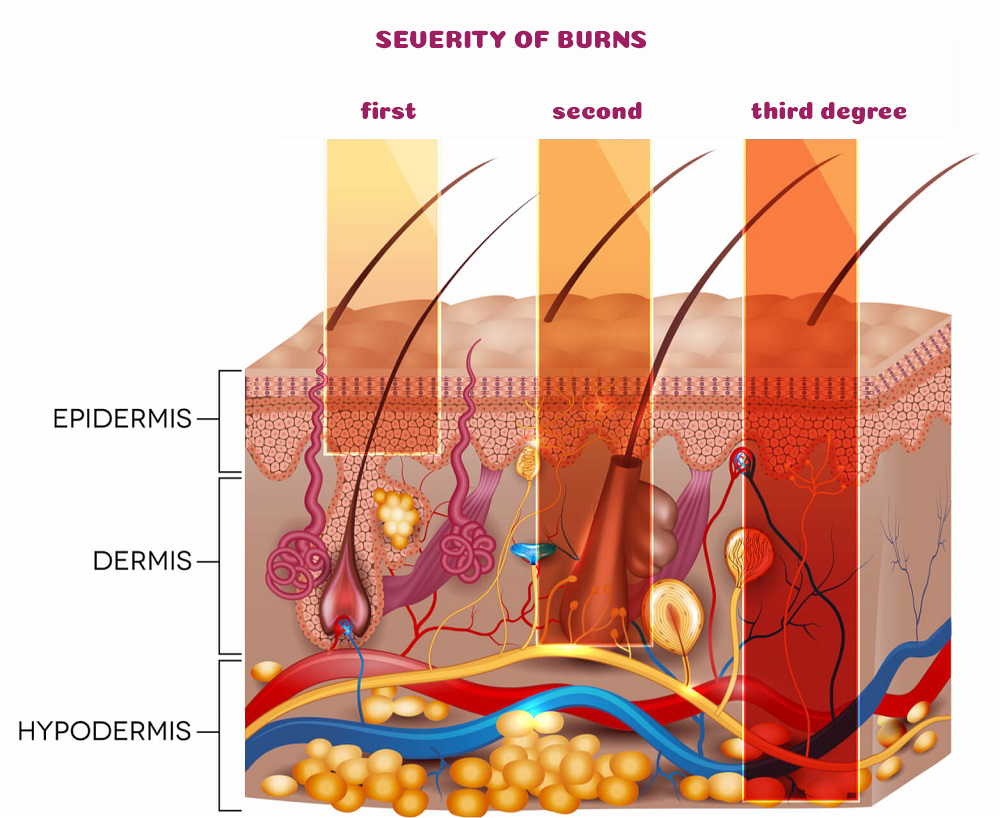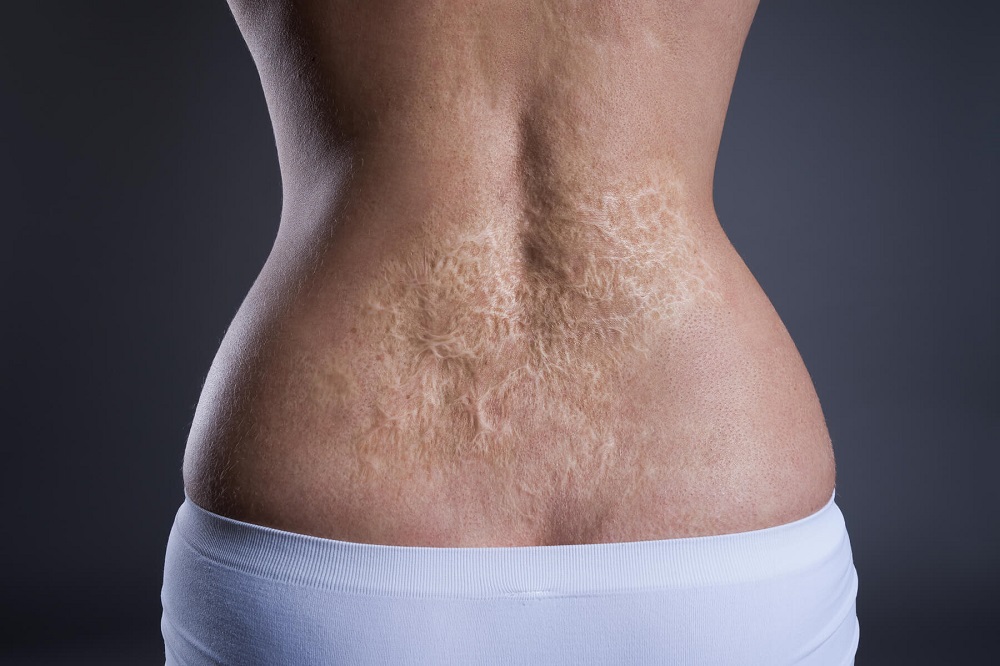One of the first things we learn in life is that some things in the house can burn us. “Watch it” – we say to children today as soon as they approach the stove, a hot iron or reach for the lighter, and surely the reaction was similar thousands of years ago when a curious child wanted to touch an open flame. Although common household burns are usually harmless, World Health Organisation statistics say that as many as 180,000 people die annually as a result of burns.
TYPES OF BURNS
There are many types of burns: those caused by friction, radiation, chemicals, electricity and, of course, heat. The fact is that our body tolerates heat up to 45°C, so anything above that temperature can damage our skin, or cause more harm. The most severe burns are accompanied by damage to deep tissue, which once burnt begins to decompose, festering and polluting the bloodstream with harmful substances. Burns can be so severe that recovery may take years and they can cause disability. The mortality rate is over 20 percent due to sepsis, shock and the inhalation of burning air and ash; the most common causes of serious burns are fire and gas explosions, carelessness in the household or in the workplace. Accidents that lead to burns happen more often in urban areas and among younger people. As for the body parts that are most exposed to burns, the most common injuries are caused to the hands and wrists, as many as 36 percent, arms – 21 percent, legs – 16 percent, while 9 percent of injuries occur on the face, head and neck.

When assessing the severity of burns, the affected body surface and the depth of damage are considered. First degree burns are superficial burns – only the epidermis, the surface layer of the skin, is damaged, the skin is red and sore, but there are no blisters. For example, these are sunburns. With them, spontaneous healing occurs and no scars remain.
Second-degree burns cause damage to the papillary dermis, which causes the appearance of fluid-filled burn blisters; in a more severe form, reticular dermis, when the skin is covered with a moist and light crust formed by burned skin elements. The burnt area swells and hurts. In the second case, after healing, a scar remains on the skin and the skin colour changes permanently. The burn must be treated with an antibiotic to prevent the development of infection, and must be protected with sterile gauze.
Severe burns are of the third degree; they are deep burns that cover the entire depth of the skin; the skin is dark (burnt) or white on the surface and it does not hurt because the nerve endings are also destroyed. According to some classifications, the most severe degree of burns is the fourth degree, which can be fatal. In this case, in addition to the skin, muscles, tendons and even bones are damaged. In both of these cases, surgical treatment and skin grafting are required, and recovery is long and complex.
SUNBURN
Apart from burns that happen by accident, for example when we get burnt by hot oil while cooking, or if we touch a hot iron, the most common thermal injuries are those that we carelessly cause to ourselves by overexposure to the sun. Although mild redness after sunbathing may seem harmless, excessive exposure to UV rays during childhood has been linked to the appearance of melanoma later in life. Applying adequate sun protection can allow us to prolong sun exposure, but it will not protect us completely if we spend too much time in direct sunlight. In hot weather, sun exposure should be avoided between 10 am and 3 pm. But if it occurs, it is necessary to provide the skin with adequate rehydration; if burn blisters and severe redness appear, cold (never icy) compresses can help, and plenty of fluids should be drunk to prevent dehydration. Aloe gel for external use can help heal the first effects of burns. Burnt surfaces must be protected during subsequent exposure to the sun.

FIRST AID
One British study that observed patients who came to an accident and emergency unit because of burns found that most people first resort to rinsing the burnt area with cold water as first aid, as many as 51 percent of patients; 29 percent of them do not apply any first aid measures. It is interesting that 4 percent of patients, mostly of Asian origin, use toothpaste. In the Balkans, people use a wide range of “folk” solutions such as butter, fat, flour, oil or beaten eggs. It is important to know that such solutions can cause more harm than good, because they prevent tissue cooling. Also, a burn blister should never be punctured. Fluid accumulates inside the blisters, which helps the formation of new skin and protects it from infections.
First aid for all burns is to cool them down: the burnt area should be cooled with clean, cold (not ice cold) water. It is best to place the burnt part of the body under running water and cool it for at least 15 minutes. Cold compresses can also be used. If burns are severe, the patient should lie down, the burnt part of the body should be raised, clothing removed and cold moist compresses applied before ambulance arrives.
BALM FOR BURNS
Burns cause skin cells to die; the skin defends itself by producing collagen, a protein that ‘repairs’ the damage. As the skin heals scars are formed. Some fade over time, and some remain. Although, initially when the burn occurs, nothing should be applied directly to the skin apart from cold water, especially when it comes to more serious burns; later, when the skin cools down we can help it regenerate with natural remedies. What is good for burns? One of the best skin regenerators is Chilean rose oil. Extremely rich in oleic and linoleic acid, vitamin E and retinol acid, this oil reduces redness, burning and skin peeling, but it is also effective for more serious scars caused by trauma and burns.

In addition to Chilean rose oil, skin regeneration is further stimulated by cocoa and shea butter and the oils of avocado, jojoba, marigold, wheat germ and evening primrose. Broadleaf plantain has been known since ancient times as a plant that heals wounds, and today we know that it achieves this by stimulating fibroblast proliferation, wound vascularisation and collagen synthesis. All these ingredients are part of the natural Devi skin regeneration balm which contains beeswax as a base, as well as bisabolol and panthenol. Devi skin regeneration balm does not only help burn-scars to fade, but it also helps in the regeneration of damaged skin either after surgical procedure or due to psoriasis, atopic dermatitis or acne; it is very effective for burns caused by sun exposure, for dry skin irritations or simply for the care of sensitive skin. It aids healing, reduces itching, burning sensation and skin irritations; it also has a strong antiseptic, bactericidal and fungicidal effect, so it protects us from infections. What is good for burns? First of all, caution, especially when it comes to sun exposure, then first aid, skin care and hydration and – naturally – the application of our top quality balm for burns.

